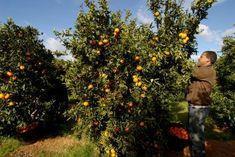
The Spanish region of Valencia has launched its citrus conversion project, agreed by national government last year.
The aim of the plan is to diversify and reorganise the citrus varieties produced in the region, to stabilise the market and bring prosperity to what has become a beleaguered sector of Spanish fruit and vegetable production.
The Valencian plan will subsidise growers up to 60 per cent of the cost of grubbing up their old trees and planting new ones, grafting new varieties onto existing rootstock and improving irrigation. The subsidies will be met equally by the Valencia regional executive and the national government.
Another benefit of the plan is that it will shift production away from the peak in December and January towards the end of the season, in order to fill gaps on the marketplace during that period and to meet growing consumer demand for easy peelers.
The project was born out of the need to improve profitability for growers and the expectation is that this can be achieved in the medium term. Only certain growers qualify for the help and must have production of 0.3 hectares to 18ha, for example. There are further financial benefits for growers if they are members of a producer organisation, are classified as young growers or have their production based in disadvantaged areas.
The Valencia regional government hopes to accomplish the shift in varieties over the next four years.



